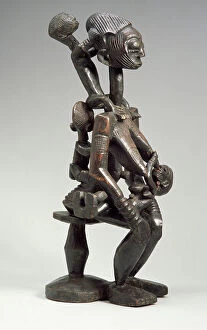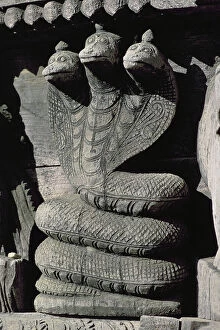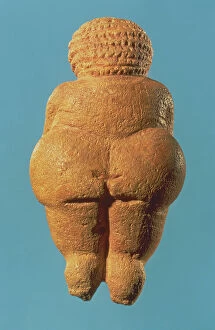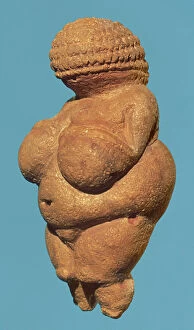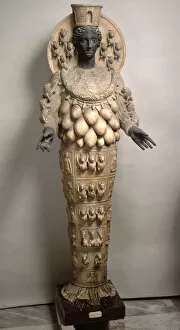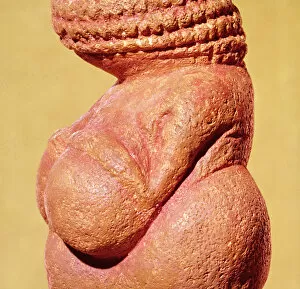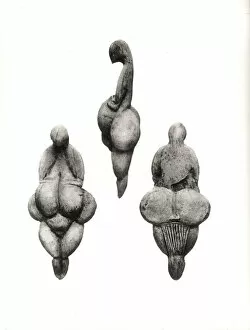Fertility Symbol Collection
The concept of fertility has been depicted and revered throughout history, transcending time and cultures
For sale as Licensed Images
Choose your image, Select your licence and Download the media
The concept of fertility has been depicted and revered throughout history, transcending time and cultures. From the iconic Cerne Abbas Giant in Dorset, England, UK to the intricate wood carving of a three-headed snake, these symbols have captivated our imagination. One such symbol is The Venus of Willendorf, a limestone figurine colored with red ochre dating back to 30000-25000 BC. This ancient artifact showcases the importance placed on fertility during prehistoric times. Its side view reveals its voluptuous form and serves as a testament to the celebration of femininity. Traveling across continents, we find ourselves in Australasia's New Zealand where a Maori statue stands proudly in Hamilton's Waikato Region. This representation pays homage to their cultural beliefs surrounding fertility and life-giving forces. Venturing further eastward brings us to Tappeh Sarab in Iran where the Venus of Sarab resides. This nude woman figurine holds significance within Iranian culture as it embodies their reverence for female fertility. Moving towards Egypt's Hierakonpolis Temple during the early Dynastic Period, we encounter a baboon statuette that symbolizes procreation and abundance. These artifacts were cherished by ancient Egyptians who believed they held divine powers related to fertility. In Ephesus, Greece lies Artemis' temple adorned with bronze and alabaster statues representing this goddess of childbirth and protector of women. These sculptures stand as reminders of her influence over reproductive health. Closer home in Dimeka village square among Ethiopia's Hamar tribe, we witness an embodiment of their strong connection with nature's cycles through vibrant rituals celebrating fertility rites. Returning once more to The Venus of Willendorf but this time focusing on its detailed torso from Gravettian culture provides insight into how even small aspects can hold profound meaning when it comes to honoring life-giving abilities. Lastly, Lespugue's Rideaux Cave houses a Venus statuette from Haute-Garonne, France.

